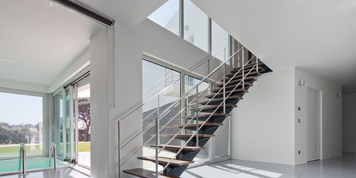jqk41.com"Problem Solving & Maintenance" services refer to the activities and processes involved in identifying, analyzing, and resolving issues or problems related to various systems, equipment, or processes. These services are crucial for ensuring the smooth operation and optimal performance of assets, minimizing downtime, and maintaining productivity. Here's some information about Problem Solving & Maintenance services:
Problem Identification: The first step in the problem-solving process is identifying issues or problems that may arise in the systems, equipment, or processes. This can be done through regular inspections, monitoring, data analysis, or by responding to specific incidents or failures reported by users or stakeholders.
Troubleshooting: Once a problem is identified, the next step is to troubleshoot and diagnose the root cause. This involves analyzing data, conducting tests, and using expertise and experience to determine the underlying issues causing the problem.
Maintenance Planning: Problem-solving and maintenance services include developing and implementing maintenance plans. These plans outline preventive maintenance activities such as routine inspections, cleaning, lubrication, calibration, and replacing or repairing components before they fail. Planned maintenance helps reduce the likelihood of problems occurring and extends the lifespan of assets.
Corrective Maintenance: Corrective maintenance involves addressing issues or failures that occur unexpectedly. This service focuses on resolving problems quickly and efficiently to minimize downtime and restore normal operations. It may involve repairing or replacing faulty components, conducting system adjustments, or implementing temporary solutions while a permanent fix is planned.
Root Cause Analysis: Problem-solving services often involve performing root cause analysis (RCA) to determine the underlying factors contributing to problems. RCA helps identify the fundamental causes rather than just addressing the symptoms. By understanding the root causes, organizations can implement effective solutions to prevent similar issues from recurring in the future.
Documentation and Reporting: Maintenance services typically involve maintaining comprehensive documentation and reporting systems. This includes keeping records of maintenance activities, problem-solving processes, and their outcomes. These records provide valuable insights for future troubleshooting, help track trends, and support decision-making regarding asset replacement, upgrades, or process improvements.
Continuous Improvement: Problem-solving and maintenance services emphasize a culture of continuous improvement. This involves analyzing performance data, feedback from users, and lessons learned from problem-solving processes. The information gathered is used to identify areas for improvement and implement changes to enhance system reliability, reduce costs, and optimize maintenance practices.
Emergency Response: In critical situations, problem-solving services may include emergency response capabilities. This involves mobilizing resources, expertise, and equipment to address urgent issues and minimize the impact of failures on operations, safety, or the environment.
Organizations providing Problem Solving & Maintenance services often employ skilled technicians, engineers, and maintenance personnel who have expertise in troubleshooting, analysis, and repair techniques. They may also utilize advanced technologies such as condition monitoring, predictive maintenance, and remote monitoring to proactively identify and address potential issues before they escalate.
By effectively solving problems and maintaining assets, organizations can improve reliability, increase operational efficiency, extend equipment lifespan, and ultimately reduce costs associated with downtime and repairs.








